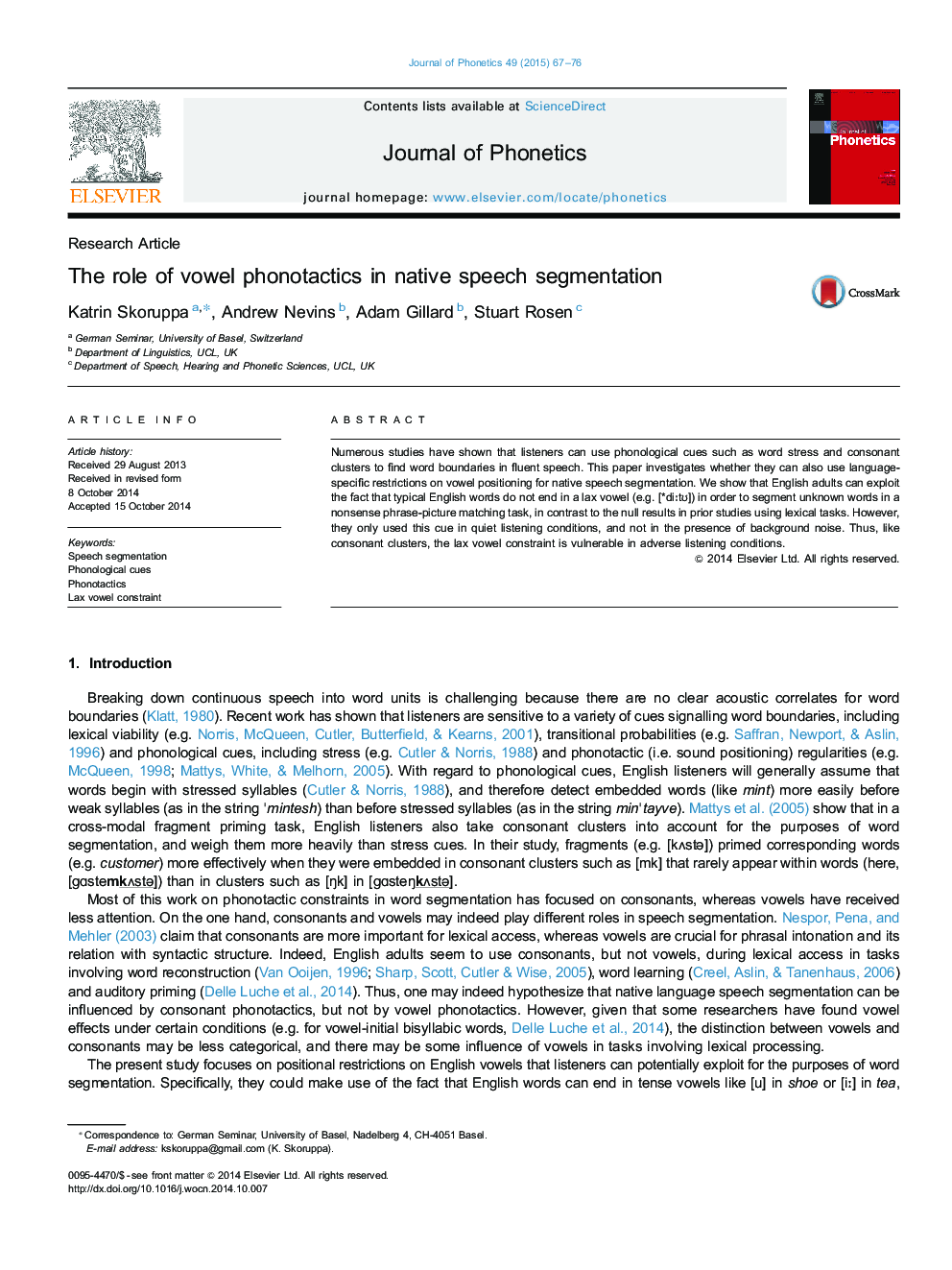| Article ID | Journal | Published Year | Pages | File Type |
|---|---|---|---|---|
| 7532921 | Journal of Phonetics | 2015 | 10 Pages |
Abstract
Numerous studies have shown that listeners can use phonological cues such as word stress and consonant clusters to find word boundaries in fluent speech. This paper investigates whether they can also use language-specific restrictions on vowel positioning for native speech segmentation. We show that English adults can exploit the fact that typical English words do not end in a lax vowel (e.g. [*diËtÊ]) in order to segment unknown words in a nonsense phrase-picture matching task, in contrast to the null results in prior studies using lexical tasks. However, they only used this cue in quiet listening conditions, and not in the presence of background noise. Thus, like consonant clusters, the lax vowel constraint is vulnerable in adverse listening conditions.
Keywords
Related Topics
Social Sciences and Humanities
Arts and Humanities
Language and Linguistics
Authors
Katrin Skoruppa, Andrew Nevins, Adam Gillard, Stuart Rosen,
